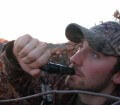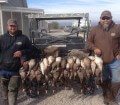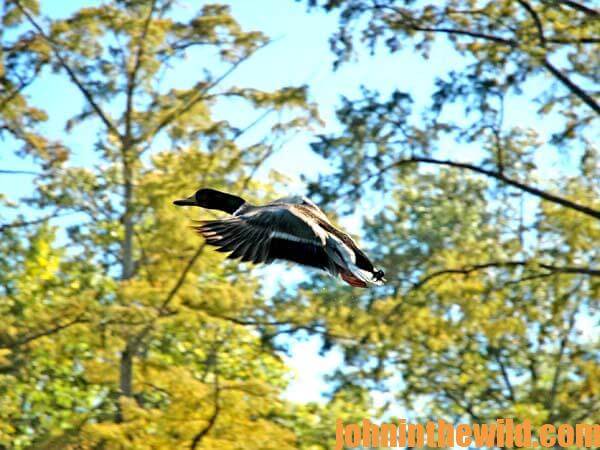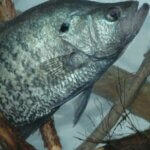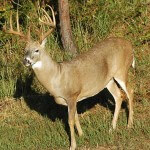Many duck hunters cite rule-number one of successful duck calling as not to call the birds when they fly toward the hunter and his decoys. According to the late Eli Haydel, “A duck call is used only as a last-ditch effort to get the ducks to come into the decoys once they’ve made the decision not to light in your spread. Many hunters will bag a limit of ducks quicker if they’ll keep their calls in their pockets. If I have ducks coming to my decoys, I don’t call much until the birds have passed over the decoys and are leaving the area. Then I give a hard, loud, comeback call with a sense of urgency. I only use a five-note call. If the wingbeats of the ducks don’t change, and the birds don’t start to turn, then these ducks aren’t going to work.”
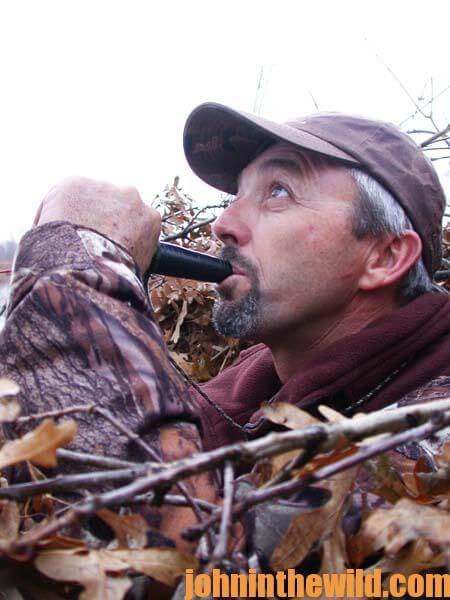 Haydel also said that the number of ducks in the flock often will alert a hunter as to whether or not he needs to call and which call to use. “Odd-numbered flocks will come in to the decoys more readily than even-numbered flocks. Odd-numbered flocks are comprised of birds that have just come down the flyway and perhaps one of the mates in this flock has been shot. These new ducks will work to a call and the decoys much better than ducks that have been in the area for awhile and know where the blinds are. That’s why I’ll start calling to an odd-numbered flock of ducks with a comeback call when they pass in front of the blind. If the flock is made up of an even number of birds, I’ll use a pintail whistle to call those ducks. The pintail is a very wary duck but will light on the water with a wide variety of other ducks. I believe that when passing ducks hear the pintail whistle, they assume the flock sitting on the water is safe and secure and that if they turn and come to it, they won’t encounter danger.”
Haydel also said that the number of ducks in the flock often will alert a hunter as to whether or not he needs to call and which call to use. “Odd-numbered flocks will come in to the decoys more readily than even-numbered flocks. Odd-numbered flocks are comprised of birds that have just come down the flyway and perhaps one of the mates in this flock has been shot. These new ducks will work to a call and the decoys much better than ducks that have been in the area for awhile and know where the blinds are. That’s why I’ll start calling to an odd-numbered flock of ducks with a comeback call when they pass in front of the blind. If the flock is made up of an even number of birds, I’ll use a pintail whistle to call those ducks. The pintail is a very wary duck but will light on the water with a wide variety of other ducks. I believe that when passing ducks hear the pintail whistle, they assume the flock sitting on the water is safe and secure and that if they turn and come to it, they won’t encounter danger.”
From watching a lone mallard hen sitting on a pothole as a flight of ducks has come close to her, Haydel learned that the hen never calls until after the flight of ducks has passed her by. “Then she’ll call only once or twice to attempt to get the flock to come back and light on the water with her. Therefore, when my friends and I see a loose flight of ducks with an erratic wingbeat, we don’t try to call to that flock until it’s already passed our decoy spread. If a single mallard hen is flying over the spread, she’ll often quack loudly and answer a call. Most hunters think because this duck is answering the call so readily, they’ll be able to work her to within gun range. However, more than likely, she’s not going to come into the spread but instead is trying to pull the decoys, which she assumes are live ducks, into the air to fly off with her.”
When a hunter attempts to call pintails into decoys, Haydel suggests that he can break Haydel’s rule of not calling to approaching ducks and still have success. “Because the pintail is such a wary duck, I start blowing the pintail whistle even as the birds approach the decoys to attempt to calm them down and assure them that the decoys are in fact live ducks. I continue to blow the whistle until the pintails cup their wings and come in to light. Pintails usually will circle decoys and carefully look those decoys over more times than a mallard will. If pintails won’t come into the decoys after hearing the coaxing of the pintail whistle but instead turn to fly off, I’ll change calls and give the comeback call of the mallard hen. Although the pintail drake makes a whistling sound, the hen quacks like a mallard hen but gives a deeper call. If a flight of pintails is leaving the decoys, by quacking like a mallard hen with a series of five pleading, fast quacks, I get the pintails’ attention. Then I put down the mallard call and once again resume using the pintail whistle.”
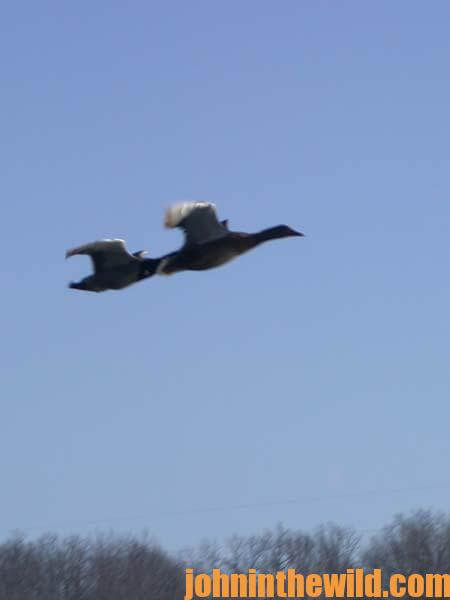 If you’re hunting in an area with intense hunting pressure, you need to listen to the calls other outdoorsmen give. Then determine not to call like the other hunters, since their calls haven’t worked. As Haydel always emphasized, “Most hunters give a 7 – 9 note comeback call. However, I think I’m more effective giving a 5-note call. Don’t give any more calls than absolutely necessary to bring the ducks into the blind. If ducks are working and are committed to your decoys and your blind, then leave the birds alone.”
If you’re hunting in an area with intense hunting pressure, you need to listen to the calls other outdoorsmen give. Then determine not to call like the other hunters, since their calls haven’t worked. As Haydel always emphasized, “Most hunters give a 7 – 9 note comeback call. However, I think I’m more effective giving a 5-note call. Don’t give any more calls than absolutely necessary to bring the ducks into the blind. If ducks are working and are committed to your decoys and your blind, then leave the birds alone.”
Thayne Barrie, an avid waterfowler from Idaho (see Days 1 and 4), says that when he sees ducks coming in from the Idaho grain fields to the Snake River, he’ll give them a hail call. “Then I’ll try some lonesome hen calls and sit-down calls and follow-up with some confidence quacks. I use feeder calls some, but I’ve found the ducks tend to respond more to sit-downs and confidence quacks than anything where we live.”
Other hunters recommend using the greeting call, if they only can use one call to bring in ducks. The greeting call – the backbone of all other calls – gets the ducks’ attention since a mama duck most often uses it to pull a flock of passing birds to her. If you’ll watch ducks on the water, you’ll see a hen mallard stretch her neck and give either a slow or a fast greeting call to pull down a flock of high-flying webfoots. You can use light greeting calls or feeding chuckles between your greeting calls. But that loud, hard calling usually will lasso in the ducks and reel them in to you. Too, some hunters enjoy feeding calls, fun-to-blow calls that show off their calling abilities. But generally a feeding call will have little effect in pulling ducks into your blind, although you can fill in between calls with feeding calls.
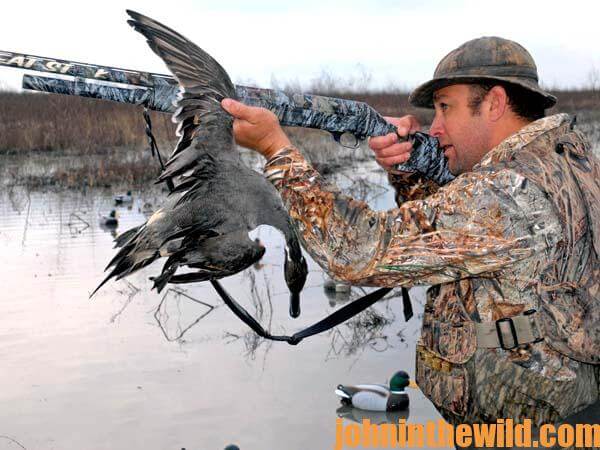 “For late-season duck hunting I change my tactics somewhat,” Joel Homansky of Savannah, Georgia, (see Day 2) explains. “I call very little later on in the season when I’m hunting in flooded timber, because by the middle of the season the ducks we have to hunt in the Savannah area have been shot at all along the flyway and are very spooky. The only call then that I use is the feeding chuckle. When I’m hunting standing timber, I never use a highball call on the big ducks like mallards and pintails.”
“For late-season duck hunting I change my tactics somewhat,” Joel Homansky of Savannah, Georgia, (see Day 2) explains. “I call very little later on in the season when I’m hunting in flooded timber, because by the middle of the season the ducks we have to hunt in the Savannah area have been shot at all along the flyway and are very spooky. The only call then that I use is the feeding chuckle. When I’m hunting standing timber, I never use a highball call on the big ducks like mallards and pintails.”
These master quackers hunt ducks as religiously as a preacher preaches on Sunday. They’ve learned most of what they know about ducks, setups, duck calling and duck hunting from observation and practice. They’ll readily tell you that no tactic always works on duck but that these strategies have had proven success for them.
To learn more about all types of hunting and fishing, see John E. Phillips’ print and eBooks at https://johninthewild.com/books.
Also you can download free books by going to https://johninthewild.com/free-books.

